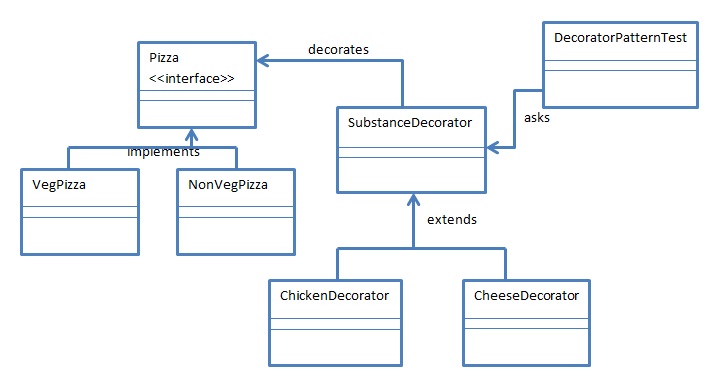Table Of Content
- Common Issues with Design Patterns in Java
- Creational Software Design Patterns in Java
- Behavioral Patterns
- The Relevance of Design Patterns in Large-Scale Software Development
- Miscellaneous Design Patterns
- Factory Design Pattern Implementation
- Exploring Composite and State Patterns
- Factory Design Pattern Diagram
The template method defines the steps to execute an algorithm, and it can provide a default implementation that might be common for all or some of the subclasses. Design patterns are essential tools for writing clean, maintainable, and scalable Java code. They provide solutions to common software design problems and promote good coding practices. By incorporating design patterns into your programming toolkit, you can streamline development and enhance the quality and maintainability of your Java applications. Design patterns are reusable solutions to common software design problems. They offer a structured approach to solving issues in software development and are not specific to any particular programming language.
Common Issues with Design Patterns in Java
Model-View-Controller (MVC) Pattern is one of the oldest architectural patterns for creating web applications. The visitor pattern is used when we have to perform an operation on a group of similar kinds of objects. With the help of a visitor pattern, we can move the operational logic from the objects to another class. An observer design pattern is useful when you are interested in the state of an Object and want to get notified whenever there is any change. In the observer pattern, the Object that watches the state of another Object is called observer, and the Object that is being watched is called subject.
Creational Software Design Patterns in Java
BEFORE AND AFTER USING DESIGN PATTERNS -SIZE & CYCLOMATIC COMPLEXITY... - ResearchGate
BEFORE AND AFTER USING DESIGN PATTERNS -SIZE & CYCLOMATIC COMPLEXITY....
Posted: Wed, 01 Jul 2020 13:52:43 GMT [source]
The challenge is to find a suitable solution to create these types of Banking Accounts. The Factory Design Pattern is a promising candidate because its purpose is to manage the creation of objects as required. Assume a situation whereby you have a set of shapes like circles, squares, and triangles. One option is to add a method that calculates the area of each shape class.

Behavioral Patterns
It allows you to create a central store for specific data and provide access to it from any component within the React tree, regardless of its nesting level. This promotes better code organization and simplifies state management. Higher-Order Components (HOCs) are a design pattern in React that allows you to create new components by wrapping existing ones.
Depending on the nature of the objects being cloned and customized, additional considerations may be needed to maintain code clarity and avoid unintended side effects. To truly grasp the essence of the Prototype pattern, let’s dive into each of its components, unraveling the layers that make this creational pattern a powerful tool in Java development. Behavioral patterns define the ways in which objects interact and communicate with one another. They help to streamline the communication between components and promote flexible and maintainable systems. The Strategy pattern defines a family of algorithms, encapsulates each one, and makes them interchangeable, allowing the algorithm to vary independently from clients that use it. We define an abstract Graphic class with a draw() method and add() and remove() methods that throw UnsupportedOperationException by default.

The getInstance() method checks whether the instance is null, and if it is, it creates a new instance. We began with the basics, introducing the Singleton and Factory patterns, which are fundamental to many Java applications. We then moved on to more complex patterns, such as the Observer and Decorator patterns, providing code examples and discussing their use cases and benefits.
Factory Design Pattern Implementation
Behavioral patterns are used to manage communication between objects and control the flow of data. The factory design pattern is used when we have a superclass with multiple subclasses and based on input, we need to return one of the subclasses. This pattern takes out the responsibility of the instantiation of a Class from the client program to the factory class.
Exploring Composite and State Patterns
When the state of one object changes, its dependents are notified and updated automatically. The Flyweight pattern uses sharing to support large numbers of fine-grained objects efficiently, reducing memory usage and object creation overhead. The Facade pattern provides a unified interface to a set of interfaces in a subsystem. It defines a higher-level interface that makes the subsystem easier to use. The Adapter pattern converts the interface of a class into another interface that clients expect. Next, we ventured into expert-level territory, introducing alternative approaches such as the Composite and State patterns.
As you continue your journey in Java development, consider the unique challenges and opportunities presented by your projects. The Prototype pattern is a versatile solution, but its effectiveness depends on thoughtful implementation and adaptation to specific requirements. Let’s consider a graphical application where users can create customized shapes. A notable advantage of the Prototype pattern is its ability to facilitate dynamic object creation at runtime.
The flyweight design pattern is used when we need to create a lot of Objects of a Class. Momento Method is a Behavioral Design Pattern, it provide to save and restore the previous state of an object without revealing the details of its implementation. Lets you define a subscription mechanism to notify multiple objects about any events that happen to the object they're observing. Lets you split a large class or a set of closely related classes into two separate hierarchies—abstraction and implementation—which can be developed independently of each other.
They help you to create larger structures while maintaining the relationships between components. The Abstract Factory pattern provides an interface for creating families of related or dependent objects without specifying their concrete classes. In this comprehensive guide, we’ve delved into the world of design patterns in Java, a powerful tool for efficient and reusable code. We’ve explored the most common design patterns, from basic to advanced, and discussed their implementation, advantages, and potential pitfalls. Design patterns are fundamental to software development, providing a standardized and optimized approach to solving common problems. They are essentially well-proven solutions to recurring issues in software design.

No comments:
Post a Comment